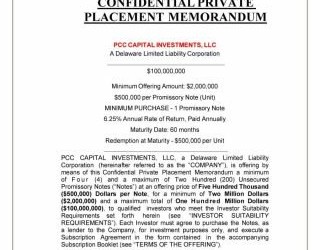
Were the reports profiling Trump’s ‘executive order’ that repealed the long-planned Dept of Labor implementation of a new fiduciary rule for investment advisors fake news?? Apparently Mr. Trump, along with whoever on his staff is drafting his first 100 days edicts in rapid fire fashion, as well as financial news media wonks and likely a whole bunch of other folks who thought that Trump was trumping the introduction of more regulations on the financial industry were all wrong. According to Michael Kitces of industry publication Bank Investment Consultant, it turns out that The Fiduciary Rule was NOT Deleted by President Trump.
(Bank Investment Consultant) Feb 5 2017–Once President Trump won the election, it was widely believed it would be a matter of time before he issued an executive order to delay April’s rollout of the Department of Labor’s fiduciary rule.
Yet, the final version of the memorandum that the president signed on Friday did not match the originally circulated draft and it did not actually include a provision to delay the regulation after all, despite wide reporting to the contrary.
In fact, the final issuance was not an executive order at all, but a presidential memorandum. The key difference was that the section that would have proclaimed a 180-day delay for the fiduciary rule was eliminated, along with any direct guidance to the Department of Labor about seeking a stay to the rule given the ongoing lawsuit.
You can see the text here: Presidential Memorandum on Fiduciary Duty Rule..
WHAT IT SAYS (AND DOESN’T SAY)
Notably, nothing in the final version of this memorandum actually delays the fiduciary rule. (It appears that the original plan to seek a delay had been to rely on the authority of 5 USC 705 to postpone the effective date of the rule. However, the final rule already went effective last year, technically on June 7th of 2016, after the requisite 60-day review period under the Congressional Review Act had closed.)
The looming April 10 date is merely the applicability date on which key provisions of the rule will be enforced. There is no legal authority to delay.
Instead, the memorandum actually directs the Labor secretary to undertake a new “economic and legal analysis” to evaluate whether the looming applicability date of the fiduciary rule has harmed investors through to a reduction of Americans’ access to retirement products and advice, whether it has resulted in dislocations of the retirement services industry (that may adversely affect investors), or whether the rule is likely to cause an increase in litigation and the prices that investors must pay to gain access to retirement services.
To the extent that the new analysis reveals problems, the Labor secretary is directed to “publish for notice and comment a [new] proposed rule rescinding or revising the rule.”
In other words, all President Trump has actually done is to direct the Labor secretary to begin a new rulemaking process.
Prospectus.com team of capital markets experts and international securities lawyers specialize in preliminary offering prospectus, secondary offering prospectus and full menu of financial offering memorandum document preparation.
More information re capital raising and related investor offering documentation services via this link
Prospectus.com team of capital markets experts and international securities lawyers specialize in preliminary offering prospectus, secondary offering prospectus and full menu of financial offering memorandum document preparation.
More information re capital raising and related investor offering documentation services via this link
- See more at: http://brokerdealer.com/blog/#sthash.NOZS1bKT.dpuf
Prospectus.com team of capital markets experts and international securities lawyers specialize in preliminary offering prospectus, secondary offering prospectus and full menu of financial offering memorandum document preparation.
More information re capital raising and related investor offering documentation services via this link
- See more at: http://brokerdealer.com/blog/#sthash.NOZS1bKT.dpuf
YET ANOTHER RULE TO COME?
The reality is that conducting such an analysis, and issuing a new proposal, and running a notice-and-comment period, is no small feat.
Bear in mind that the DoL issued its proposed rule in April of 2015, and took almost exactly a full year to complete the notice and comment period, gather the feedback and issue a final rule.
Also, bear in mind it took 4.5 years to develop that proposed rule, from the original proposed rule in the fall of 2010 (which in turn had its own notice and comment period).
It took the DoL about 5.5 years to issue a final rule. Yet, in this case, the DoL has almost exactly two months.
In other words, it took the DoL about 5.5 years, across multiple phases, to issue a final rule.
Yet, in this case, the DoL has almost exactly two months. And President Trump’s Labor secretary nominee, Andrew Puzder, still hasn’t even been confirmed. The Wall Street Journal reports his confirmation hearing has been delayed “indefinitely” due to questions about his ethics and financial paperwork. At the same time, Anthony Scaramucci, who was advocating against the rule, may not get the top role advising President Trump as was previously expected. That means, the timeline is not only very tight, but it may not even be clear who’s leading the charge.
REMAINING OPTIONS TO DELAY
Notwithstanding this challenge, Acting Secretary of Labor Ed Hugler did issue a brief statement just hours after President Trump signed the official memorandum, stating that the DoL “will now consider its legal options to delay the applicability date.”
As it stands today, the rule still has not been delayed, and the White House appears to have directly acknowledged that it doesn’t have the authority to delay the rule at this point.
Still, as it stands today, the rule still has not been delayed, and the White House appears to have directly acknowledged that it doesn’t have the authority to delay the rule at this point, given its decision to remove the 180-day delay language from the final version the president signed.
There are still a few potential tactics that could result in at least a partial delay.
1) Invite a stay from the court on one of the pending lawsuits. The first option: The DoL, facing lawsuits, could invite the court to stay the case – and potentially the rule, ostensibly while it further formulates its legal defense and/or begins to go through the proposal and notice-and-comment periods. The end result might be at least a temporary delay in the applicability of the rule.
However, there is still debate about whether this could actually delay the applicability date (or just the legal proceedings up until the applicability date hits), and this legal tactic could not be used indefinitely. In some reasonably timely manner, the courts would still expect the case to resume. While the tactic might be attempted, it’s still unclear whether the stay could last long enough to actually undertake the requisite economic and legal analysis, to draft a new proposed rule, to complete the notice and comment period, and actually finalize a new alternative version of the rule (or rescind it altogether).
In addition, a ruling is expected in the coming week on what is arguably the biggest DoL fiduciary lawsuit, a consolidation of those filed by the U.S. Chamber of Commerce, SIFMA, ACLI, NAIFA, and more… and obviously, requesting a stay in the case is a moot point once the ruling is issued.
2) An expedited proposed rule that suspends/extends applicability date. The second option is that the Labor Department could try to hurry through its economic and legal analysis, and then quickly proposed a revised rule making perhaps just minor changes… including pushing back the applicability date. This would still appear to require the DoL to issue public notice and complete a comment period, and then get a final rule issued, all by April 10th, which may not be administratively feasible. Or at least, to complete its legal and economic analysis (perhaps focusing on the “easiest” point of contention, which is the third clause about the fiduciary rule causing an increase in litigation), issue a proposed rule for notice and comment, and then try to delay the applicability date of the old rule pending completion of the notice and comment period of the newly-proposed rule.
Overall, the biggest problem to delaying the rule remains that all of these strategies take time.
Pushing through a rule change so quickly, though, even if just for a change as minor as an adjustment to the applicability date, invites at least the potential of a legal challenge from the fiduciary advocates that the change was too hasty, arbitrary and capricious, and in violation of the Administrative Procedures Act; after all, many industry companies are suing the DoL claiming that its 5.5 year rulemaking process since 2010 was “too hasty”… so it would be more than a little ironic for the DoL to now complete a rule-change process (which includes a delay) in barely two months.
Expect a lot of people on both sides of the issue to be scrutinizing the Administrative Procedures Act, trying to figure out exactly how far into a new rulemaking process the DoL has to go in order to legitimately delay the applicability date of the already-effective rule.
3) A legislative fix from Congress. The only other viable option to entirely halt the rule would be an act of Congress. However, the Democrats still have enough votes in the Senate to filibuster the legislation. And with Sen. Elizabeth Warren issuing a letter to banks asking whether any have proceeded far enough in their fiduciary implementation that they’d like it to move forward without delay, and re-issuing its report cataloguing the “salacious” sales incentives/prizes offered to annuity agents selling into retirement accounts, it appears that the Democrats are still prepared to fight to keep this particular rule on the books (especially since there’s a clear endgame – they just have to make it to the April 10th applicability date, and then all firms will have had to comply, and legislation to delay the applicability date will be a moot point).
Overall, the biggest problem to delaying the rule remains that all of these strategies take time, and with the final applicability date just two months away, financial institutions have to continue to fully prepare for the possibility that the rule won’t actually be stopped.
To continue reading the entire article, please click here



